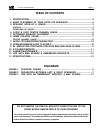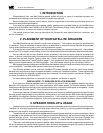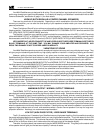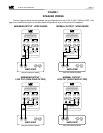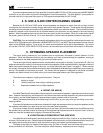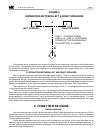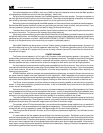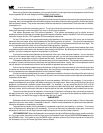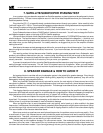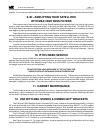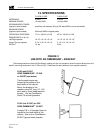
S-125/S-125C/S-85/S-85C page 8
If the other speakers are not M&Ks, don't worry; M&K's unique tonal balance controls allow the M&K speakers
to be adjusted to emulate the sound of the other speakers. Here's how:
Set up a listening comparison between your the M&K speaker and the other speaker. Connect one speaker to
the front right channel and the other to the front left channel. Place them as close together as possible, and compare
their sound by alternately rotating the balance control fully to the right and fully to the left.
Switch the controls on the back panel of the M&K speaker until it sounds as similar as possible to the other speaker.
Set the other M&K speaker identically (unless you are adding just one as a center channel), and you're all set. If you
have any questions, please give us a call and we'll be happy to discuss this with you.
The other factor critical to achieving excellent Home Theatre performance is level-matching the three front and
two surround channels. This is even more important than timbre-matching.
We strongly recommend that you purchase a Radio Shack Sound Level Meter (available for less than about $40,
and get the analog meter, not the digital) and use it to measure the output of the speakers when playing the test tones
generated by your processor or receiver. WHENEVER POSSIBLE, DO NOT CALIBRATE LEVELS BY EAR! Using
a meter is an inexpensive way to be certain that your system is calibrated properly.
When M&K Satellites are being used in a Home Theatre system, placement becomes extremely important, as
you will be balancing four or five (or more) speakers rather than two. The following guidelines are for a five-channel
Pro-Logic or 5.1 channel AC-3 system, but if you are not using a Center channel, the instructions for the other four
channels will still apply.
CENTER CHANNEL
The Center channel speaker in a Pro-Logic or AC-3 system is the most important speaker in the system. This
speaker often produces more output than the left and right speakers
combined
. This speaker should be of the highest
possible quality, and as similar as possible in response and radiation pattern to the left and right speakers. Three
identical speakers are best, unless the center channel is designed to work with a set of left and right speakers.
It is also important to have as much amplifier power as possible for the Center channel. As a minimum, the three
front channels should be identical in power output, but it is better if the Center channel has more. If you have less power
in the Center channel, this will be the limiting factor in the total output capability of the system when watching and
listening to video sources.
All M&K Satellites, with their compact size and adjustable tonal balances, are ideal for Center channel use, but
our center channel models have been optimized for their application. M&K's adjustable tonal balances allow our
Satellites to acoustically balance with a wide range of other speakers to provide a smooth front channel soundfield. Our
non-center channel Satellites have optional magnetic shielding to allow them to be used close to a television set.
The Center channel speaker should be located as close as physically possible to the television or projection
screen. It should be just above or just below the screen. If that is not possible, then just to the left or the right of the
screen may still be acceptable.
If the television is not in the center of the room (or not centered between the Left and Right speakers), the Center
channel speaker should still be as close as possible to the screen -- even if it is outside the left and right speakers (such
as a TV located in a corner of the room outside the stereo spread of the left and right speakers). Good results can be
achieved in unusual configurations when the Center speaker is as close as possible to the screen.
The Left and Right front channel speakers in a Home Theatre system should be placed the same as the left and
right speakers in a stereo setup. Some listeners, however, may prefer to reduce the distance between the left and right
speakers to bring the size of the acoustic image closer to the size of the screen image.
For example, with a 25" direct-view television, you would want the speakers closer together than you would with
a 100" projector. One recommendation is to separate the speakers by 1.5 times the diagonal screen size; another is
to place the left and right speakers to create a 45 degree angle with the main listening position.
There is a great deal of latitude in this area, as it is one of personal preference (especially if you will listen to music
without video).
It is also preferred that the speakers be equidistant from the listening position. Equidistant usually means that
when the center speaker is on top of the television, the left and right speakers will sit in front of the set (they will be farther
from the wall behind the TV than the center speaker). Ideally, the speakers should be at the same height as the screen,
but it is much more important that all three speakers be at as close to each other's height as possible. If the center is
much higher or lower than the other speakers, the effect can be distracting. Angling, or toeing-in the speakers, to aim
at the listening position often improves imaging.




